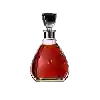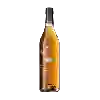
Domaine La Tour VieilleCuvée Francis Cantié Banyuls
This wine generally goes well with beef and mature and hard cheese.
The Cuvée Francis Cantié Banyuls of the Domaine La Tour Vieille is in the top 40 of wines of Banyuls.
Food and wine pairings with Cuvée Francis Cantié Banyuls
Pairings that work perfectly with Cuvée Francis Cantié Banyuls
Original food and wine pairings with Cuvée Francis Cantié Banyuls
The Cuvée Francis Cantié Banyuls of Domaine La Tour Vieille matches generally quite well with dishes of beef or mature and hard cheese such as recipes of beef colombo bourguignon style or stuffed pumpkin.
Details and technical informations about Domaine La Tour Vieille's Cuvée Francis Cantié Banyuls.
Discover the grape variety: Voskeat (e)
Armenia, where it is grown both as a table grape and as a wine grape - Synonyms: voskehat, voskath, khardji, xardji (for all the synonyms of the grape varieties, click here!)
Informations about the Domaine La Tour Vieille
The Domaine La Tour Vieille is one of of the world's greatest estates. It offers 15 wines for sale in the of Banyuls to come and discover on site or to buy online.
The wine region of Banyuls
Banyuls wines come from the South-eastern Part of Roussillon, in the south of France, in the lower Pyrenees, a few kilometres from the Spanish border. These naturally Sweet wines are consumed both as an aperitif and as a dessert. They come in a wide range of hues, from GoldenGreen (Banyuls Blanc) to Amber (Banyuls Ambré) to the intense garnet of the standard Banyuls Rouge. Unusually among the natural sweet wines of France, all Banyuls wines are made primarily from Grenache grapes of various colors.
The wine region of Languedoc-Roussillon
Languedoc (formerly Coteaux du Languedoc) is a key appellation used in the Languedoc-Roussillon wine region of southern France. It covers Dry table wines of all three colors (red, white and rosé) from the entire region, but leaves Sweet and Sparkling wines to other more specialized appellations. About 75% of all Languedoc wines are red, with the remaining 25% split roughly down the middle between whites and rosés. The appellation covers most of the Languedoc region and almost a third of all the vineyards in France.
The word of the wine: Merrain
Oak wood split into planks used to make the barrel.














